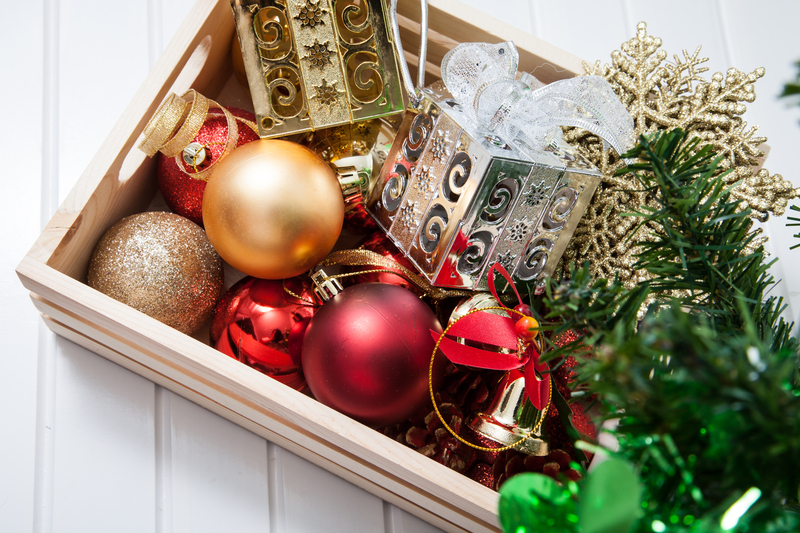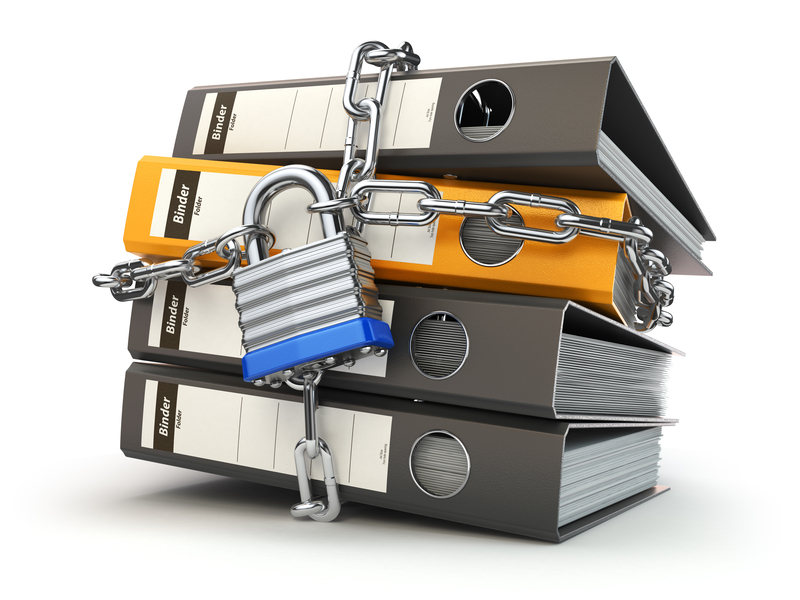Discover How to Pack Efficiently for Your House Move
Posted on 03/06/2025
Discover How to Pack Efficiently for Your House Move
Moving to a new home brings both excitement and challenges. One of the most crucial aspects of a successful move is figuring out how to pack efficiently. With the right approach, you can save time, reduce stress, and ensure all your belongings arrive at your new destination in perfect condition. In this comprehensive guide, you'll discover practical packing tips, organizational strategies, and expert advice for making your house move smooth, efficient, and even enjoyable.
Why Efficient Packing Matters for Your Home Relocation
Many people underestimate the importance of efficient packing for a house move. Beyond making the process quicker and less chaotic, organized packing ensures that your possessions are protected, that nothing gets lost, and that you can unpack with minimal hassle. If you're searching for the best tips on how to pack efficiently for moving house, this article is here to guide you every step of the way.

1. Start Early: The Secret to a Stress-Free House Move
Procrastination is the enemy of efficient packing. Begin preparing for your move at least a month in advance. This allows you to tackle your belongings in manageable chunks and avoid last-minute chaos.
- Make a moving checklist: Itemize tasks and set deadlines to stay on track.
- Sort non-essentials first: Begin with items you use least often, such as seasonal clothing, books, and decor.
- Allocate time each day: Packing a little bit every day prevents overwhelm and ensures nothing is overlooked.
2. Declutter and Downsize Before You Pack
One of the top tips on how to pack efficiently for a move is to reduce your load. Decluttering not only saves packing materials and moving costs, but also creates a fresh start in your new home.
- Sort by category: Go through clothing, kitchenware, books, toys, and paperwork one group at a time.
- Make 'keep, donate, sell, recycle' piles: Be honest about what you actually use and love.
- Host a garage sale or use selling platforms: Turn unwanted items into extra moving funds.
3. Gather the Right Packing Supplies
Having the right materials is crucial for efficient and safe packing. Invest in high-quality moving supplies to protect your belongings from damage and keep the packing process smooth.
- Sturdy boxes in various sizes - Use small boxes for heavier items and larger ones for lighter belongings.
- Packing paper and bubble wrap - Protect fragile items like dishes and glassware.
- Stretch wrap or plastic wrap - Secure furniture doors and drawers.
- Packing tape and markers
- Specialty boxes - Wardrobe boxes for hanging clothes, TV boxes for electronics, and dish packs for kitchenware.
*Tip:* Ask local stores for free boxes, or check online marketplaces for gently used packing supplies to save money.
4. Pack Room by Room for Maximum Efficiency
Packing efficiently for your house move is much easier when you work methodically room by room. This approach keeps organization simple and makes the unpacking process significantly easier.
- Finish one room before moving to the next.
- Label boxes with the room name and contents.
- Group similar items together.
Rooms like the kitchen and bedroom may take longer, so plan extra time for these areas.
5. Organize and Clearly Label Everything
Clear labeling is key to efficient house moving and fast unpacking. Mark each box with the following details:
- Room of destination (e.g., "Kitchen - Pots & Pans")
- Contents
- Fragile (If applicable)
- Handling direction: (e.g., "This Side Up")
Consider color-coded tape or stickers for each room for extra clarity.
6. Use the Right Packing Techniques for Different Items
Learning how to pack your belongings efficiently for a house move means utilizing smart packing methods for various item types.
How to Pack Fragile and Valuable Items Safely
- Wrap each item individually: Use bubble wrap or packing paper for glass, ceramics, and electronics.
- Fill empty spaces: Use towels, socks, or crumpled paper to prevent shifting during transit.
- Double-box valuables: Place items inside a smaller box, then into a larger, cushioned box for extra protection.
How to Pack Clothes Efficiently for Your Move
- Leave clothes in drawers: Wrap drawers in plastic wrap to keep items in place - a real time saver!
- Use wardrobe boxes: Hang clothing directly inside, minimizing wrinkles and unpacking time.
- Roll, don't fold: Rolling saves space and keeps garments neater.
How to Pack Books and Documents
- Use small boxes: Books are heavy, so keep boxes under 40 lbs for easier lifting.
- Pack upright or flat: Keep spines straight and add paper to fill gaps.
- Digitize documents: Scan important paperwork before packing for backup.
Packing Kitchenware and Small Appliances
- Use sturdy dish packs: These are reinforced boxes designed for fragile kitchen items.
- Wrap each piece separately: Protect glassware and plates with paper or bubble wrap.
- Disassemble appliances if possible: Keep cords and parts in labeled bags.
Efficiently Packing Artwork and Mirrors
- Use mirror boxes or bubble wrap: Prevent damage to glass surfaces.
- Mark boxes as fragile and store upright.
7. Maximize Space With Smart Packing
Unlock the full potential of your moving boxes by using every available inch.
- Fill gaps with soft goods: Towels, blankets, and clothing protect breakables and use space wisely.
- Stack heavier items on the bottom: This prevents lighter objects from getting crushed.
- Store small items in pots or shoes: Make use of hollow items to pack efficiently.
- Use vacuum bags for bulky fabrics: Compress bedding and winter clothes to shrink their volume.
8. Keep Essentials Accessible
Pack an 'essentials box' for each family member with all the must-haves you'll need immediately upon arrival at your new home. This minimizes stress and confusion on moving day.
- Medication and toiletries
- Chargers and electronics
- Important documents
- Snacks and basic cooking supplies
- Fresh clothes, towels, and bedding
9. Protect Furniture and Large Items
Taking care of your big-ticket items is essential when packing efficiently for a house move.
- Disassemble furniture: Remove legs, shelves, or hardware where possible to save space and prevent damage.
- Use moving blankets or bubble wrap: Shield surfaces from nicks and scratches.
- Wrap mattresses in plastic covers: Protect against dirt and moisture.
- Secure hardware and screws in labeled bags: Tape them to the relevant furniture parts for easy reassembly.
10. Don't Overpack Boxes
While you want to maximize space, never overfill boxes to the point where they're hard to lift or may break. Keep box weight under 50 lbs and always test before sealing.
- Lighter boxes limit back injuries and are easier to maneuver.
- If in doubt, use more boxes with less inside each.
11. Stay Safe While Packing for Your Home Move
Your health and safety are as important as your belongings. Use proper lifting techniques, wear gloves when handling sharp or heavy objects, and take breaks.
- Bend with your knees, not your back.
- Work with a partner for heavy lifting.
- Stay hydrated and eat regularly.
12. Consider Professional Packing Services
Sometimes the most efficient way to pack for a house move is to let the experts handle it. Professional packers are trained to work quickly and safely, using industry-best techniques to protect your belongings. This is especially valuable if you have fragile items, limited time, or a large home.
13. Unpacking: The Final Step to a Successful House Move
Efficient packing sets you up for efficient unpacking. With every box labeled and organized, you can settle into your new home faster and with less hassle.
- Unpack essentials and perishables first.
- Stick to your room-by-room system.
- Flatten boxes as you go and recycle or give them away.

Frequently Asked Questions About Efficient Packing for a House Move
How far in advance should I start packing for my move?
Ideally, begin packing non-essentials at least four weeks before moving day and work gradually until the move.
How do I pack fragile items efficiently?
Wrap each item individually, use double-boxing for valuables, and fill gaps with soft materials for the best protection.
What's the best way to label my moving boxes?
Use large, bold writing to indicate the contents and intended room. For extra efficiency, use color-coded stickers or tape.
Conclusion: Move With Confidence and Efficiency
Mastering how to pack efficiently for your house move makes all the difference in enjoying a smooth, stress-free transition. By planning ahead, organizing your possessions, investing in quality packing materials, and using the expert tips outlined here, you'll protect your belongings and set yourself up for an easy move-in day.
Remember: Every move is unique, but the goal is always the same--make your new house feel like home as quickly and effortlessly as possible. Use these comprehensive packing strategies to simplify your next move, and you'll be unpacked, settled, and enjoying your new space before you know it!
